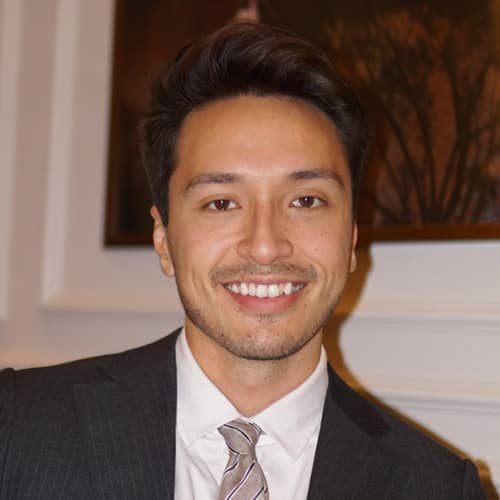Enormous power comes with attention and focus. But sometimes when we try too hard, it can backfire. We excel the most when our focus is unconsciously immersed in what we set out to do: when we play The Inner Game.
***
Straight out of Harvard in 1971, Timothy Gallwey was working as a tennis coach. Having captained the tennis team at the university, he was on sabbatical before starting a career job.
One day, when he left the court briefly after a student training session, one of his students, who struggled with a technical problem, had remarkably improved his game by the time he returned. Gallwey observed that the student had taught himself to overcome the issue after the training session.
That’s when Gallwey realized his new way of coaching. He quickly discovered that students would perform worse when he gave them verbal instructions and that they would perform better when he asked them to mimic his strokes and to silence the mutterings of their conscious minds. It worked beautifully.
Based on this epiphany, Gallwey then set out to write The Inner Game of Tennis. He never expected to sell many copies. After all, he was still a young fellow just at the start of his coaching career. That’s why you could probably imagine how astounded he became when the book turned out to sell over a million copies over the next decades.
The Inner Game of Tennis turned out to become quite an influential book “off the court” as well as on the court. Al Gore gave the book to his campaign staff to improve their concentration, Itzhak Perlman recommended it to aspiring violinists, and a group of Canadian researchers identified it as a guide to better sex. In 1983, The New York Times called it the first to introduce the importance of mental training to the public
.
I like to play tennis, but that’s certainly not the main reason why I enjoyed reading this book so much. Gallwey uncovers techniques and insights applicable to any environment. Consider how Gallweys opens the book with a great story:
Imagine what goes on inside the head of an eager student taking a lesson from an equally eager new tennis pro. Suppose that the student is a middle-aged businessman bent on improving his position on the club ladder. The pro is standing at the net with a large basket of balls, and being a bit uncertain whether his student is considering him worth the lesson fee, he is carefully evaluating every shot. “That’s good, but you’re rolling your racket face over a little on your follow-through, Mr. Weil. Now shift your weight onto your front foot as you step into the ball… Now you’re taking your racket back too late … Your backswing should be a little lower than on that last shot… That’s it, much better.” Before long, Mr. Weil’s mind is churning with six thoughts about what he should be doing and sixteen thoughts about what he shouldn’t be doing. Improvement seems dubious and very complex, but both he and the pro are impressed by the careful analysis of each stroke and the fee is gladly paid upon receipt of the advice to “practice all this, and eventually you’ll see a big improvement.
(…) My next lesson that day was with a beginner named Paul who had never held a racket. I was determined to show him how to play using as few instructions as possible; I’d try to keep his mind uncluttered and see if it made a difference. So I started by telling Paul I was trying something new: I was going to skip entirely my usual explanations to beginning players about the proper grip, stroke and footwork for the basic forehand. Instead, I was going to hit ten forehands myself, and I wanted him to watch carefully, not thinking about what I was doing, but simply trying to grasp a visual image of the forehand. He was to repeat the image in his mind several times and then just let his body imitate. After I had hit ten forehands, Paul imagined himself doing the same. Then, as I put the racket into his hand, sliding it into the correct grip, he said to me, “I noticed that the first thing you did was to move your feet.” I replied with a noncommittal grunt and asked him to let his body imitate the forehand as well as it could. He dropped the ball, took a perfect backswing, swung forward, racket level, and with natural fluidity ended the swing at shoulder height, perfect for his first attempt! But wait, his feet; they hadn’t moved an inch from the perfect ready position he had assumed before taking his racket back. They were nailed to the court. I pointed to them, and Paul said, “Oh yeah, I forgot about them!” The one element of the stroke Paul had tried to remember was the one thing he didn’t do! Everything else had been absorbed and reproduced without a word being uttered or an instruction being given!
I was beginning to learn what all good pros and students of tennis must learn: that images are better than words, showing better than telling, too much instruction worse than none, and that trying often produces negative results. One question perplexed me: What’s wrong with trying? What does it mean to try too hard?
Anyone who has ever done a competitive activity should be able to resonate with that story. But still, you can’t help but feel there’s some kind of a mystery to it all. Why is it that imaging became a better learning approach? How can verbal instructions turn counterproductive? What does it mean to try too hard? In other words…
What Is the Inner Game?
The best way to understand Gallwey’s idea is to imagine that when playing tennis, you’re not competing against one opponent; you’re competing against two. One is the player standing on the other side of the court. The other is your conscious mind.
Somehow, we always perform at our best in any field when we’re in a state of flow. When you’re in a state of flow, you feel more integrated, feel free of inhibitions, feel at your peak performance. It’s always difficult to explain how you get into that state but everyone has felt it at some point. It feels wonderful. But somehow, even though you feel attentive, immersed in the task at hand, being in a state of flow is actually winning over your second opponent – your conscious mind.
Gallway explains:
Reflect on the state of mind of a player who is said to be “hot” or “playing in the zone.” Is he thinking about how he should hit each shot? Is he thinking at all? Listen to the phrases commonly used to describe a player at his best: “He’s out of his mind”; “He’s playing over his head”; “He’s unconscious”; “He doesn’t know what he’s doing.” The common factor in each of these descriptions is that some part of the mind is not so active. Athletes in most sports use similar phrases, and the best of them know that their peak performance never comes when they’re thinking about it.
In other words: the way you get into a state of flow is actually when you tune out. And when you tune out, silencing that interfering inner voice, suddenly everything feels effortless.
It’s from this observation that Gallwey drew his key insight: the idea of Self 1 and Self 2:
Now we are ready for the first major postulate of the Inner Game: within each player the kind of relationship that exists between Self 1 and Self 2 is the prime factor in determining one’s ability to translate his knowledge of technique into effective action. In other words, the key to better tennis—or better anything—lies in improving the relationship between the conscious teller, Self 1, and the natural capabilities of Self 2.
The idea is that Self 2 can master almost everything in a short amount of time if only Self 1 doesn’t interfere. And so, the way to enter the state of flow is to quiet Self 1. But as you’re probably thinking, that can be an excruciatingly hard thing to do. We are thinking, conscious animals. It’s in our nature to pretty much always be vigilant of ourselves and our surroundings. And we tend to talk to ourselves.
As Gallwey writes:
For most of us, quieting the mind is a gradual process involving the learning of several inner skills. These inner skills are really arts of forgetting mental habits acquired since we were children.
It’s why you’re not in a state of flow all the time. But, Gallwey proposes a very practical insight as to how you might go about getting there.
Let Go of Judgments
The first very important skill to learn for getting into a flow of high performance is to let go of judgments. Why? Because just the smallest act of judgment provokes a thinking process. And provoking a thinking process awakens Self 1 rather than constraining it.
Judgment results in tightness and tightness interferes with the fluidity required for accurate and quick movement. Relaxation produces smooth strokes and results from accepting your strokes as they are, even if erratic.
And it’s not just negative judgments. Even positive thinking and compliments can be harmful. Self 1 sees a compliment as a potential criticism because it’s a binary thing. If you’re pleased with one thing, you will be displeased with the opposite.
Gallwey discovered this by observing what happened when he only gave positive assessments to his students and left out any of the negative. But it didn’t work any better.
Clearly, positive and negative evaluations are relative to each other. It is impossible to judge one event as positive without seeing other events as not positive or negative. There is no way to stop just the negative side of the judgmental process.
By judging performance, you look at something and make an assessment of how it should be. But the key is to see what is, not what it should be. The key is to make nonjudgmental, calm observations of the outcomes your performance is producing. Essentially, this is how bad habits are unlearned.
That being said, keeping the judgments of Self 1 at bay won’t be enough to give Self 2 free reign. There’s another very important element to it.
It’s a Game of Trust
The prerequisite to unleashing human potential is to allow autonomy and flexibility – or trust. No team functions optimally without it, nor does any business or any human system.
That same principle is very true of Self 1 and Self 2. To overcome the inner opponent, both of these selves must work in harmony which is only possible if you seamlessly trust your Self 2.
Because the amazing thing about the human body and unconsciousness is that it works perfectly fine without any conscious management. You don’t have to control every little thing that your body does. It’s the urge to do that which oftentimes leads to trying too hard, paralyzing performance. Generally, nothing we have to force leads to the outcome we desire.
Of course, when you’re a beginner at something, being able to completely quiet Self 1 is unlikely because you don’t trust yourself. You know you’re a beginner and so you try to try to remember each sequential move and action that you think is right. You try very hard and there’s nothing wrong with that. But as Gallwey explains, it’s important at some point to trust your Self 2 in order to perform at your best.
The last point Gallwey makes in order to become proficient at the inner game is to not fight your mind, but focus it.
This is the key point at the heart of the book and of really doing anything well. Focus means staying in the present. Most of our suffering takes place when we allow our minds to imagine the future or dwell over the past. When a great tennis player is there in the moment, he stops caring about the plays that lie in the future.
***
Gallwey devotes the last part of the book to reflecting on what the inner game means outside of tennis. He argues that every human activity – whether it’s wealth-seeking, education, reputation, or friendships – involves both external and inner obstacles. And while the external obstacles can vary much, the inner obstacle remains the same: the tendency to worry, to regret, to self-doubt, and to self-criticize.
In order to master the inner game, we must keep judgment at bay, trust our natural learning capabilities, and focus on the present. It requires effort to get there. But it’s beautifully effortless at the same time.


